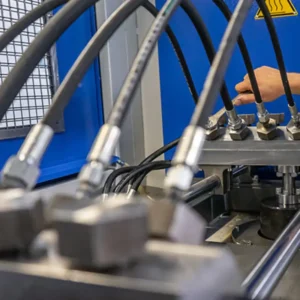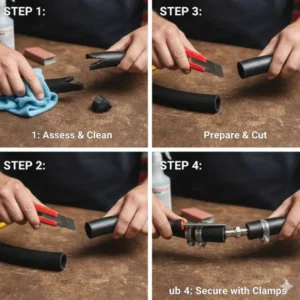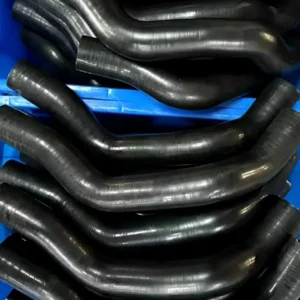From our car’s brake systems to our home’s plumbing to complex industrial machinery, braided hoses are everywhere, silently enduring high pressures, high temperatures, and various harsh environments. In this article, we’ll take a first-person look at the world of braided hoses, exploring their different types, their unique advantages, and how to choose the right one for your needs.
What is a Braided Hose?
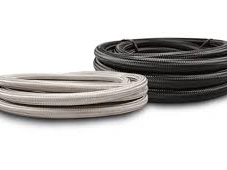
When discussing braided hose, we first need to understand its basic structure. It’s more than just a simple tube; it’s a meticulously engineered product constructed from multiple layers of material. Typically, it consists of three components: an inner tube, a braided reinforcement layer, and an outer jacket.
The inner tube is the actual fluid channel, while the braid acts as its “skeleton,” providing its core strength and pressure resistance. It’s this unique braided structure that gives the hose its exceptional performance, enabling it to withstand challenges unsuitable by ordinary rubber or plastic hoses.
The core of a braided hose’s design lies in its reinforcement layer. This layer, typically woven from metal wires, fibers, or synthetic materials, wraps tightly around the inner tube like a tight-fitting armor. This braid pattern distributes and withstands the high pressure generated by the internal fluid while protecting the inner tube from external abrasion and impact. It’s this structural sophistication that makes braided hose a top choice for high-pressure, high-intensity applications.
Why Are Braided Hoses So Important?
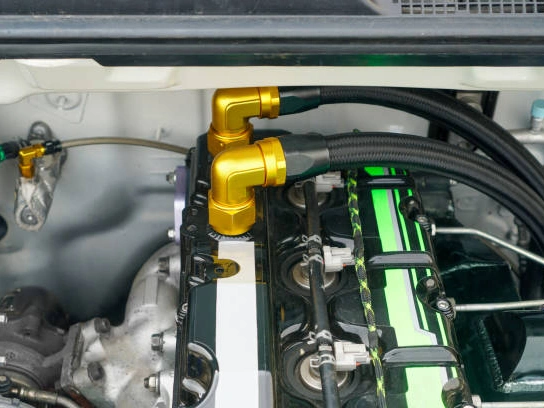
Safe fluid delivery is crucial in many critical applications. Traditional hoses can burst due to high pressure or leak due to external abrasion, causing serious property damage or even accidents. Braided hoses offer a perfect solution to these problems.
Excellent High-Pressure Resistance: The braid effectively resists the immense pressure of the internal fluid, preventing the hose from expanding or bursting, ensuring stable system operation.
Excellent Abrasion Resistance: The outer braid, particularly the metal braid, effectively protects against external friction, scratches, and impact, extending its service life.
High Flexibility and Bend Radius: Despite their high-pressure resistance, braided hoses maintain a certain degree of flexibility, adapting to confined or complex installation environments.
Corrosion and Temperature Resistance: By combining different core and braid materials, we can create braided hoses that withstand a wide range of chemicals and extreme temperatures.
Braided Hose Types by Reinforcement Material

The material used for the braiding is a key factor in determining a hose’s performance. Depending on the application, we see a few different material choices. Each one brings unique properties to the table, making it suitable for specific environments and uses.
Stainless Steel Braided Hose
This is the most common and versatile type. Stainless steel braiding provides exceptional pressure resistance, corrosion resistance, and abrasion protection. We frequently find these hoses in automotive brake lines, fuel systems, and various industrial hydraulic applications. They not only look professional but also offer the highest level of safety and longevity.
Fiber Braided Hose
These hoses typically use synthetic fibers like polyester, nylon, or aramid fibers for the braid. Compared to metal, fiber-braided hoses are much lighter and more flexible. They are often used in low to medium-pressure applications, such as air hoses or general-purpose water lines, where high flexibility is a priority.
Hybrid Braided Hose
Some applications require a blend of benefits. For instance, a hose might have a stainless steel braid over one or more layers of fiber braiding. This hybrid design provides the strength of metal with the added flexibility and anti-kinking properties of the fiber layers, making them ideal for high-performance, high-pressure applications.
Braided Hose Types by Inner Tube Material
While the braiding provides the strength, the inner tube material dictates what fluid the hose can carry, as well as its resistance to temperature and chemical corrosion. Choosing the right inner tube is absolutely critical for the safety and integrity of fluid transfer.
PTFE Braided Hose
PTFE, commonly known as Teflon, is famous for its outstanding chemical resistance and wide temperature range. PTFE braided hose can handle almost any corrosive chemical, fuel, or solvent, making it the preferred choice for the pharmaceutical, food processing, and chemical industries. Its non-stick properties also make it easy to clean, meeting strict hygiene standards.
Rubber Braided Hose
Rubber inner tubes are a very common and cost-effective option. Depending on the rubber compound (e.g., NBR for oil, EPDM for water), they are widely used in hydraulic systems and general-purpose applications. Their flexibility and durability make them a reliable choice for countless everyday uses.
Silicone Braided Hose
Silicone is known for its excellent high-temperature resistance. Silicone braided hose can withstand higher temperatures than standard rubber hoses, making it ideal for automotive cooling systems, turbocharger lines, and other applications that require both heat resistance and flexibility.
Applications Of Types of Braided Hose
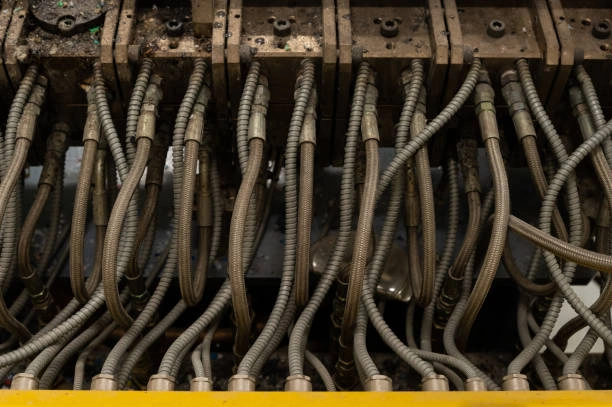
By understanding the different material properties, we can see how each type of braided hose finds its perfect fit. Here is a handy table showing some of the most common applications.
| Application Area | Recommended Braided Hose Type | Key Features and Requirements |
| Automotive | Stainless Steel Braided Hose | High-pressure resistance, anti-kinking, and corrosion resistance for brake, fuel, and oil cooler lines. |
| Hydraulics | Rubber Inner Tube with Steel Braid | Withstands high pressure spikes and pulsations; oil-resistant and durable. |
| Chemical & Pharma | PTFE Inner Tube with Steel Braid | Excellent chemical resistance, non-contaminating, easy to clean for high-purity fluid transfer. |
| Aerospace | Aramid Fiber Braided Hose | High strength-to-weight ratio, extreme temperature resistance, lightweight. |
| Plumbing | Stainless Steel Braided Hose | Prevents bursts, resists corrosion, and is easy to install for faucets and toilet connections. |
How to Choose the Right Braided Hose?
With so many options, how can you be sure you’re picking the right braided hose? I always recommend considering these key factors before making a decision:
- Fluid Compatibility: What media will the hose be carrying? Is it water, oil, fuel, a chemical, or gas? This will determine the inner tube material you need.
- Pressure Rating: Know your system’s working pressure and potential pressure spikes. The hose’s working pressure rating must exceed your system’s maximum pressure.
- Temperature Range: What are the highest and lowest temperatures the hose will be exposed to? This affects the material choices for both the inner tube and the braiding.
- Environmental Conditions: Where will the hose be installed? Will it be exposed to external abrasion, UV light, or chemical splashes? This impacts your choice of braiding and outer cover.
- Flexibility: Does your application require a tight bend radius? Is space limited? This will influence your choice of braiding and inner tube material.
Conclusion
Braided hoses are more than just simple conduits; they are engineered solutions that ensure the safety and efficiency of countless systems. From the robust stainless steel braided hose to the chemically resistant PTFE braided hose, each type has a specific role to play. By understanding the different materials and their properties, you can make an informed decision and select a hose that provides the right level of performance and security for your specific application.

